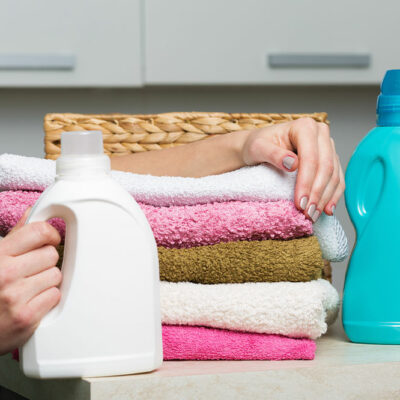
8 Ways to Avoid Respiratory Syncytial Virus Infection (RSV)
Respiratory Syncytial Virus (RSV) infection is a disease caused by the respiratory syncytial (sin-SISH-uhl) virus. It is quite a common respiratory health condition in many areas around the world. In most cases, this disease is not overly dangerous. So, the affected people get recovered within a week or two. However, RSV infection can have serious health consequences for infants and older adults. Here are a few tried-and-tested ways to avoid respiratory syncytial virus infection (RSV):
Wash hands frequently with soap
The respiratory syncytial virus tends to stay on one’s hands when they touch infected surfaces. So, whether a person is at home all day or goes out to buy groceries or run errands, they are likely to have the viral particles stuck on their hands at some point. Washing one’s hands regularly with soap and water is an effective way to eliminate these particles from there. One needs to wash their hands with soap and water for at least 20 seconds to get the best results. Alternatively, one can also carry a can of sanitizer with them wherever they go. This can be used to regularly sanitize and disinfect hands.
Avoid touching possibly contaminated surfaces
The respiratory syncytial virus particles are surprisingly easy to spread from one surface to another. If the viral particles are somehow present on a switchboard inside a house, everyone who touches it will have the viral particles on their hands in no time. This problem is especially pronounced outdoors. While one can disinfect surfaces inside their home, that is impossible outdoors. This is why people must avoid touching any surfaces outdoors or indoors as much as possible. This is especially necessary for often-touched surfaces such as elevator buttons, thrash cans, staircase handles, seats and handles in public trains and buses, and similar others.
Avoid touching one’s eyes, nose, and mouth with unwashed hands
Now, admittedly, even attempting to avoid touching any surface all day long is impossible. Inevitably, people are going to touch possibly infected surfaces and get the viral particles on their hands. The intended pathway of the virus into the human body is through an individual’s eyes, nose, and mouth. When the virus particles successfully enter these parts, a person is likely to become sick soon. To avoid this outcome, one must avoid touching their face with their unwashed or unsanitized hands. While this is a difficult thing to do, it is slightly easier than simply not touching any surfaces in one’s immediate environment.
Clean and disinfect surfaces regularly
The respiratory syncytial virus spreads through the airborne channel. So, if someone inside one’s home has the infection, every time they sneeze, cough, or even talk, the viral particles will be emitted from their mouths and noses. These particles then settle on various surfaces in and around the house. To avoid the spread of the infection, one needs to disinfect and sanitize all surfaces in and around the house regularly. Understandably, doing so outside one’s house will not be possible.
One can use disinfectants, sanitized wet wipes, or simple old soap water to do the cleaning efficiently.
Cover the mouth while coughing and sneezing
As implied earlier, the respiratory syncytial viral particles spread through the droplets one emits when coughing or sneezing. So, if there are people in and around the same room with infected people coughing or sneezing, then the former is likely to breathe in the viral particles floating in the air in those droplets. To avoid this, it is advisable for infected people to cover their mouths and noses with their elbows or a handkerchief when they cough or sneeze.
In fact, everyone must follow this principle, regardless of whether they are infected or not. This helps slow down the spread of the Respiratory Syncytial Virus infection. Apart from that, covering one’s coughs and sneezes is also a useful etiquette to form in one’s personality whether they are indoors or outdoors.
Stay home to prevent the spread of infection
Staying home prevents the possibility of being in close proximity to someone outdoors who is infected. This automatically reduces the likelihood of contracting the disease. Many kids going to school or people stepping out of their houses to earn a living may not have the option of working from home. In such instances, it is imperative for school administrators and employers to show empathy and allow remote schooling and remote work for students and employees, respectively. By doing so, the spread rate of Respiratory Syncytial Virus infection is drastically reduced, and the most vulnerable (elders, infants) are not exposed to the virus.
Avoid close contact with infected persons
People who are infected with the respiratory syncytial virus need to be quarantined. This means affected people should remain housed in an isolated room until they are fully fit. Those who are not infected, they need to stay at least six to ten feet away from those who are. This ensures that they do not contract the disease too and, in turn, spread it to those around them. Again, this is easier said than done, especially in outdoor settings. Therefore, one must maintain a respectable distance from everyone around them during RSV seasons.
Stay away from crowded zones
Crowded zones are hotspots for the spread of infection, especially during the months when RSV infection rates are high. Therefore, as much as possible, one is advised to stay away from places where even a small group of people are present. Even if one individual in a large crowd has the infection, they become superspreaders and can easily transfer the infection to everyone around them.
While most people would recover from the infection after a week or two, the most vulnerable people who get it are likely to become sick and hospitalized. So, staying away from crowds as much as possible is needed.


